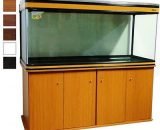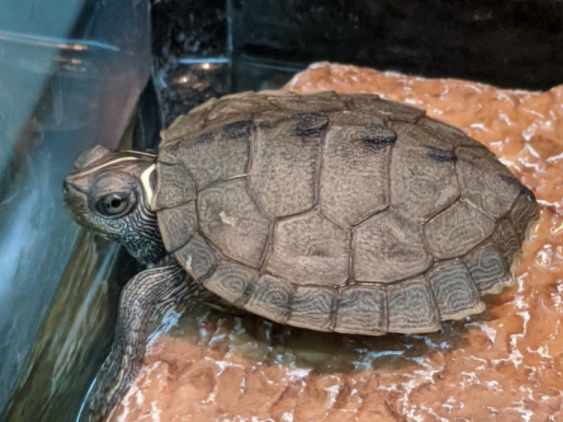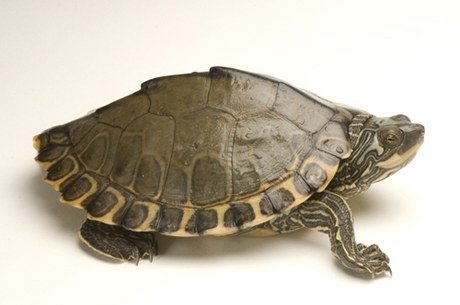Map Turtle
Explore the fascinating world of map turtles with this comprehensive guide that delves into the different types of map turtle species. From their distinct appearance to their unique habitats and behaviors, learn about the various map turtles and discover the incredible diversity within this group of aquatic reptiles.
1. Map Turtle (Graptemys pseudogeographica kohnii)
The Turtle, also known as the False Turtle, Barbour’s map turtle is characterized by its prominent keel-like ridge on the back of its shell and a vivid yellow spot behind each eye. Found primarily in the Mississippi River basin and its tributaries, this species thrives in freshwater habitats and exhibits intriguing basking behaviors.
2. Ouachita Map Turtle (Graptemys ouachitensis)
Endemic to the Ouachita River system in the southeastern United States, the Ouachita Turtle showcases a striking shell pattern with distinct yellow lines on a dark background. Its elongated and serrated tail, along with its preference for rocky river areas, ringed map turtle distinguishes this species from other map turtles.
3. Texas Map Turtle (Graptemys versa)
The Texas Turtle, native to the rivers of Texas, boasts a vibrant yellow or orange blotch on each side of its head, which contrasts against its dark olive or black shell. This species is known for its preference for slow-moving or stagnant waters and can often be found perched on logs or basking in the sun.
4. Black Knobbed Map Turtle (Graptemys nigrinoda)
Featuring a unique black knob at the center of each scute on its shell, the Black Knobbed Map Turtle is found in river systems throughout the southeastern United States. This medium-sized turtle species exhibits a preference for clear, fast-flowing streams and possesses a distinctive flattened appearance.
5. Alabama Map Turtle (Graptemys pulchra)
Endemic to the Mobile Bay drainage system in Alabama, common map turtle the Map Turtle exhibits a striking shell pattern with bold yellow lines and markings. This species favors habitats with strong currents and abundant vegetation and is well-adapted to their environment with strong swimming abilities.
6. Sabine Map Turtle (Graptemys sabinensis)
Named after the Sabine River in Texas and Louisiana, the Sabine Turtle is known for its smooth, olive-colored shell adorned with yellow stripes or markings. These turtles inhabit large rivers and prefer areas with sandy or muddy substrates where they can bury themselves during the winter months.
7. Pascagoula Map Turtle (Graptemys gibbonsi)
The Pascagoula Turtle is an endangered species found exclusively in the Pascagoula River system in Mississippi. This small to medium-sized turtle has a uniquely patterned shell with intricate lines and markings. It inhabits various freshwater habitats, including rivers, escambia map turtle creeks, and oxbows.
Embark on a journey through the world of turtles, and gain a deeper understanding of their characteristics, natural habitats, and conservation status. Discover the rich diversity of these captivating reptiles and appreciate their role in the intricate web of aquatic ecosystems.
The Turtle (Graptemys pseudogeographica kohnii) is a captivating reptile that inhabits the waterways and wetlands of the southeastern United States. Named for the intricate map-like patterns on its shell, this species belongs to the family Emydidae and is known for its remarkable adaptability and striking appearance. In this product description, we delve into the intriguing world of the Mississippi Turtle, exploring its physical characteristics, habitat, behavior, and care requirements for those looking to keep these remarkable creatures as pets. Are map turtles good pets?
8. Physical Characteristics
The Turtle possesses a distinctively patterned carapace that resembles a topographic map, with intricate lines and markings that vary in color from olive or brown to black. Juveniles feature prominent patterns that fade with age, eventually transforming into dark, highly defined lines and specks against a lighter background. This species typically reaches a shell length of 6 to 10 inches, with females being larger than males.
Its head displays vibrant yellow and orange markings, while the skin is typically olive or grayish-brown. Males exhibit long, thick tails with a small spur on each hind leg, distinguishing them from females. As semi-aquatic reptiles, they have webbed feet and sharp claws adapted for swimming and digging.
9. Habitat and Range
The Turtle primarily inhabits freshwater habitats such as rivers, streams, and swamps throughout the Mississippi River Basin, extending from Illinois and Iowa in the north to the Gulf Coast in the south. They are also found in adjacent regions like eastern Texas, western Tennessee, and the western Florida panhandle. These turtles are well-suited to a life in water, but they also require access to dry land for basking and nesting.
10. Behavior and Diet
Turtles are known for their unique behaviors and adaptations. They are diurnal, being most active during the day, and spend much of their time basking on rocks or logs, using the sun’s warmth to regulate their body temperature. This species is omnivorous, with a diet that consists of various aquatic plants, insects, mollusks, and small fish. Younger turtles tend to consume more animal matter, while adults primarily rely on plant material.
Males engage in territorial behaviors, defending their preferred basking spots or small patches of water. They often display courtship rituals during the breeding season, including head bobbing and vigorous swimming. Females lay eggs in nests dug into sandy or gravelly soil, typically along riverbanks, and incubation lasts around 60 to 80 days.
11. Keeping Mississippi Map Turtles as Pets
Turtles can make captivating and rewarding pets for reptile enthusiasts willing to provide the necessary care. When considering keeping them as pets, are map turtles friendly it is important to recreate a suitable environment that mimics their natural habitat.
A spacious aquarium or tank with a capacity of at least 55 gallons is recommended for a single turtle, with additional space for each additional turtle. The enclosure should include a basking area with a heat lamp to maintain a basking spot temperature of around 90°F (32°C). A UVB light source is essential to provide the turtles with the necessary UV radiation for proper shell and bone development.
The tank should have a large, clean water area with a depth of 12 to 18 inches, allowing the turtles to swim and dive comfortably. A good filtration system is crucial to maintain water quality and cleanliness.
To create a naturalistic environment, provide a variety of hiding spots, rocks, and branches for the turtles to explore. Aquatic plants can



















Customer reviews
Reviews
There are no reviews yet.
Write a customer review